The novelist AS Byatt, who has died aged 87, was throughout her existence a victim of Samuel Johnson’s “hunger of the imagination that preys incessantly upon life, and must be always appeased by some employment”. In the words of one of her own heroines, whatever in the moral abstract she thought about the relative importance of writing and life, nothing mattered to her more than writing.
Her first novel, Shadow of a Sun, appeared in 1964, the year after A Summer Bird-Cage, the first novel by her sister, Margaret Drabble, was published, thus establishing the notorious and possibly exaggerated rivalry between them. It was followed by studies of Iris Murdoch, of Wordsworth and Coleridge, and by another novel, The Game (1967). In 1972, she endured the death of her 11-year-old son, Charles, knocked down and killed by a car. The experience marked her deeply. She continued to teach and she sat on committees, but for a decade the creative springs were dried up in her. There is no compensation, she said to interviewers who asked about such compensations, for the death of a child – except that if you survive, you’re a bit tougher. But it taught her about the machinery of grief.
Her creative career started again in 1978 with The Virgin in the Garden, the first of what would prove to be a remarkable tetralogy of novels, and a long, complex narrative of a small community and its school in Yorkshire celebrating in the coronation year of 1953, the start of a new Elizabethan age.
To some extent the creation of fiction had become necessary to her as a complement (or antidote) to her teaching work at University College London, as a kind of private gesture against an excessively theoretical academic environment. It was evident, she wrote acerbically, that what writers there were in the 1970s were not coming out of English departments: it therefore seemed better not to go into one.
The Virgin in the Garden was well received, and was followed by Still Life (1985), which included the chance death by electrocution of one of the main characters from the first novel, and an emphasis on the accidental element in human life and death.
Her reputation (until then, that of a literary novelist with slightly intimidating intellectual qualifications) was transformed by the publication in 1990 of Possession, which was to win the Booker prize and become a slightly surprising bestseller worldwide, and, in 2002, a film.
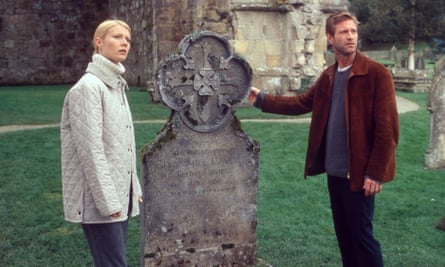
A rich and capacious combination of 19th-century letters, poems, fables and journals, all contained within the apparently orthodox setting of a modern literary detective novel, it was the book in which her exhilarating genius at last came into its own. Publishers in Britain and America, who had contemplated in appalled respect the prospect of selling a novel containing large swatches of pastiche Victorian poetry, were triumphantly refuted when sales of the book – even before the award of the Booker and Aer Lingus prizes – soared. It had seemed until then, to quote one review, that her fiction was to be characterised by a luminous bookishness that stayed artistically inert.
She was a self-confessed intellectual, and this earned her a bad press in a country in which the word was a term of denigration. Possession elbowed this image aside by adding vitality and comedy to literariness, and excitement to erudition. The wells that had been sealed up for so long were now flowing with unexpected abundance.
The book brought together elements in her background that had lain fallow until then, and provided pointers to the way her writing was to develop in the future. In it, in an extraordinarily rich mixture, are to be found her fascination with Victorian fiction and poetry, her childhood absorption in myths and fairytales, her interest in the sheer mechanics of storytelling; in it also are to be found her insatiable thirst for knowledge, her love for subtlety and complication in her plots, an increased assurance in her use of humour, her satiric view of the more exploitative aspects of the academic industry, and her growing mistrust of literary biography as a genre – described by her as “a bastard form, a dilettante pursuit”. This mistrust was something she was to explore more extensively in a later novel, The Biographer’s Tale (2000).
The publication of Possession released an unbelievable flow of creativity. Books came bursting out, notably Angels and Insects (1992), which was filmed in 1995, and, later, The Children’s Book (2009), shortlisted for the Booker. “I think I wrote them in a kind of joie de vivre about being a full-time writer instead of walking through the streets thinking about students and lectures,” she said.
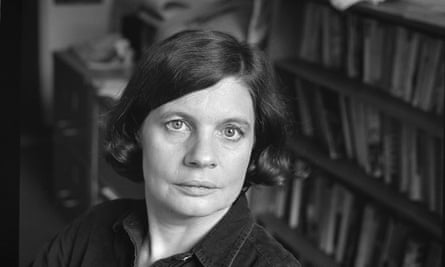
Another aspect of her talent that was unexpectedly unleashed during the 1980s and 90s was the short story. It is rarely the case that writers who are at ease in what has been described as the big baggy novel are also adept in this very different and extremely demanding form.
Byatt was able to cope with equal ease with the 2,000-word story and the 20,000-word novella. Her first collection, Sugar and Other Stories (1987), dealt with bereavement, ghosts, memories of her childhood, her father; in it, for the first time, she wrote in The July Ghost, a story based on her own grief at the loss of her son. It was a kind of clearing of the decks. Later stories carried on from where Sugar left off, building on the concentrated, painterly and tactile prose she had developed there.
One of the most typical was A Lamia in the Cévennes, written for the British Council’s New Writing series. In it, a painter who has abandoned London for the Cévennes mountains of southern France finds a lamia – a mythological creature, closely modelled on Keats’s lamia (a “palpitating snake… Her head was serpent, but, ah, bitter-sweet! She had a woman’s mouth with all its pearls complete.”) – in his swimming pool. This pool bears a striking resemblance to the one Byatt had built for her house in the village of Avèze in that region with the prize money from Possession; the hero is trying to capture the different blues and different surface planes that his pool confronts him with:
He muttered to himself. Why bother. Why does this matter so much. What difference does it make to anything if I solve this blue and just start again. I could just sit down and drink wine. I could go and be useful in a cholera-camp in Colombia or Ethiopia. Why bother to render the transparency in solid paint or air on a bit of board? I could just stop.
He could not.
He tried oil paint and acrylic, water-colour and gouache, large designs and small plain planes and complicated juxtaposed planes. He tried trapping light on thick impasto and tried also glazing his surfaces flat and glossy, like seventeenth-century Dutch or Spanish paintings of silk. One of these almost pleased him, done at night, with the lights under the water and the dark round the stone, on an oval bit of board. But then he thought it was sentimental. He tried veils of watery blues on white in water-colour, he tried Matisse-like patches of blue and petunia – pool blue, sky blue, petunia – he tried Bonnard’s mixtures of pastel and gouache.
His brain hurt, and his eyes stared, and he felt whipped by winds and dried by suns.
He was happy, in one of the ways human beings have found in which to be happy.
It was her way too. Her love of the fine arts was deep and scholarly, and is apparent throughout her work, most notably in her Portraits in Fiction (2001) and Peacock and Vine (2016), on William Morris and the designer Mariano Fortuny.
Born in Sheffield, Antonia was the eldest child of John Drabble, KC and judge, and his wife, Marie (nee Bloor). She described her childhood as having been greatly blessed by very bad asthma, and when later in life she came to read Proust, she recognised certain things in him – “a contemplative, acute vision, induced by keeping very still in order to be able to breathe, a sense of living most fiercely in the mind, or in books, which were a livelier life”. If she was fortunate in her asthma, she was also fortunate in belonging to a family that took books and reading for granted.
She remembered three colouring books that she was given at the age of four, each with a page of poetry beside a picture. The poems were The Pied Piper and Tennyson’s The Lady of Shalott and Morte d’Arthur, and she quickly had all three by heart, a suitable foundation for a writer who was to be so influenced by the Victorian age. Later, she lost herself in a tangled maze of myths, folktales, legends and fairy stories, and found in them another world beyond the (to her) limited and boring world of childhood. Most importantly, she quickly recognised and understood the vital importance of storytelling.
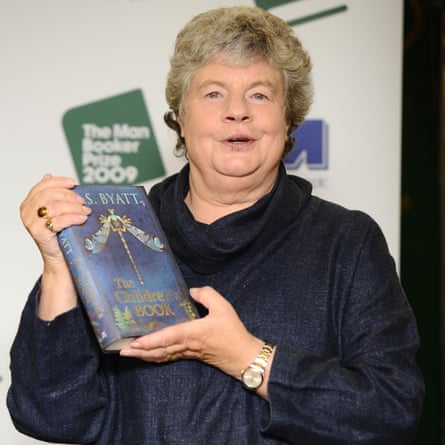
Her early immersion in myth found its outlet much later in her career, when she was invited to contribute to Canongate’s series of retellings of ancient myth. Her own novels, as she pointed out, had threads of myth in their narrative that were an essential part of their form.
It was inevitable that, in choosing which to retell, she should turn back to one of the most influential books her mother had given her in her childhood, Wilhelm Wägner’s Asgard and the Gods, and rewrite Ragnarök (2011), “the myth to end all myths, the myth in which the gods themselves were all destroyed”. Written in the persona of a child living in a time of world war, when human beings seemed bent on destroying the world they had been born into, it provided ample ammunition for metaphor and irony, as well as some beautiful writing: “Wind Time, Wolf Time, before the World breaks up. That was the time they were in.”
The second world war very soon removed her father temporarily from her daily life. However, her mother, who had been an early graduate of the English school at Cambridge but had been forced to give up teaching when she married, took it for granted that children needed to be supplied constantly with poetry and with books.
Life in the Drabble household was something of an intellectual hothouse with a highly competitive element: all four children were expected to excel. Antonia and Margaret’s younger siblings, Helen and Richard, became, respectively, an art historian and a KC.
Antonia was educated at Sheffield high school and the Mount school, York, and later at Newnham College, Cambridge, where she took first-class honours in English, at Bryn Mawr College, Pennsylvania, and at Somerville College, Oxford.
In 1959, she married Ian Byatt and had a son (who died in the accident) and a daughter; in 1969, they divorced, and she married Peter Duffy, with whom she had two daughters. She taught in the extramural department of London University (1962-71) and the Central School of Art and Design (1965-69), and in 1972 became full-time lecturer in English and American Literature at UCL (senior lecturer in 1981). She left the college in 1983 to write full time.
She was conscientious in taking on administrative chores that many writers balked at, and gave service on many committees, notably the Kingman committee on English language (1987-88). But the appointment that perhaps fed most directly into her interests was on the board of the British Council and its literature advisory panel.
Throughout her career she was, like many writers, a tireless traveller; unlike some, she was generous in acknowledging the benefits she gained from her travels, which she undertook not just to sell herself, but to learn from other writers and readers. She began writing short stories, she said, because of lectures she was given about the superiority of the short form by writers in China and Russia. But her interests were essentially and intrinsically European, and her intimate knowledge of European literature, past and present, also fed into her work.
She could read easily in many languages, which made her a natural choice as a judge of the first European literature prize, when it was established in 1990; it was while reading for it that she discovered the work of writers such as Roberto Calasso, Javier Marías and Bernardo Atxaga, for whom she formed a lasting enthusiasm, and did much to enhance their reputation in Britain.
She was also remarkable for her generosity to younger writers. At a stage of her career when she might well have been excused for finding her own professional commitments a sufficiently heavy workload, she read new work voraciously. Her floorboards cracked under the load of novels and poems sent to her by writers and publishers who valued her approval far above that of reviewers. She could not possibly have read all of them, but she read an astonishing number.
She was appointed CBE in 1990 and made a dame in 1999. Devoted to her family, she was much absorbed in the future of her children and grandchildren. But beyond every other attribute, she had a genius for friendship. In this relationship, all her qualities came to the fore: her imagination, her creativity, her ability to communicate, her steadfastness, and above all her generosity.
She is survived by her husband and daughters, Antonia, Miranda and Isabel.
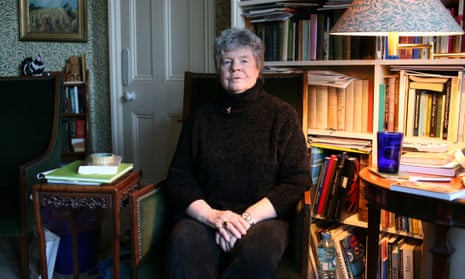

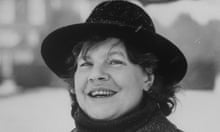
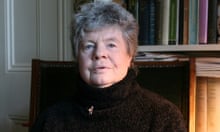
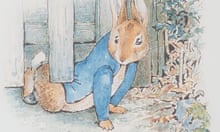
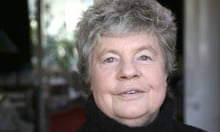
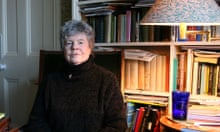
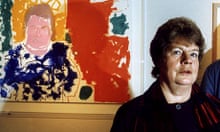
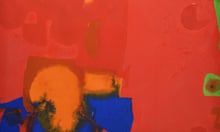
Comments (…)
Sign in or create your Guardian account to join the discussion